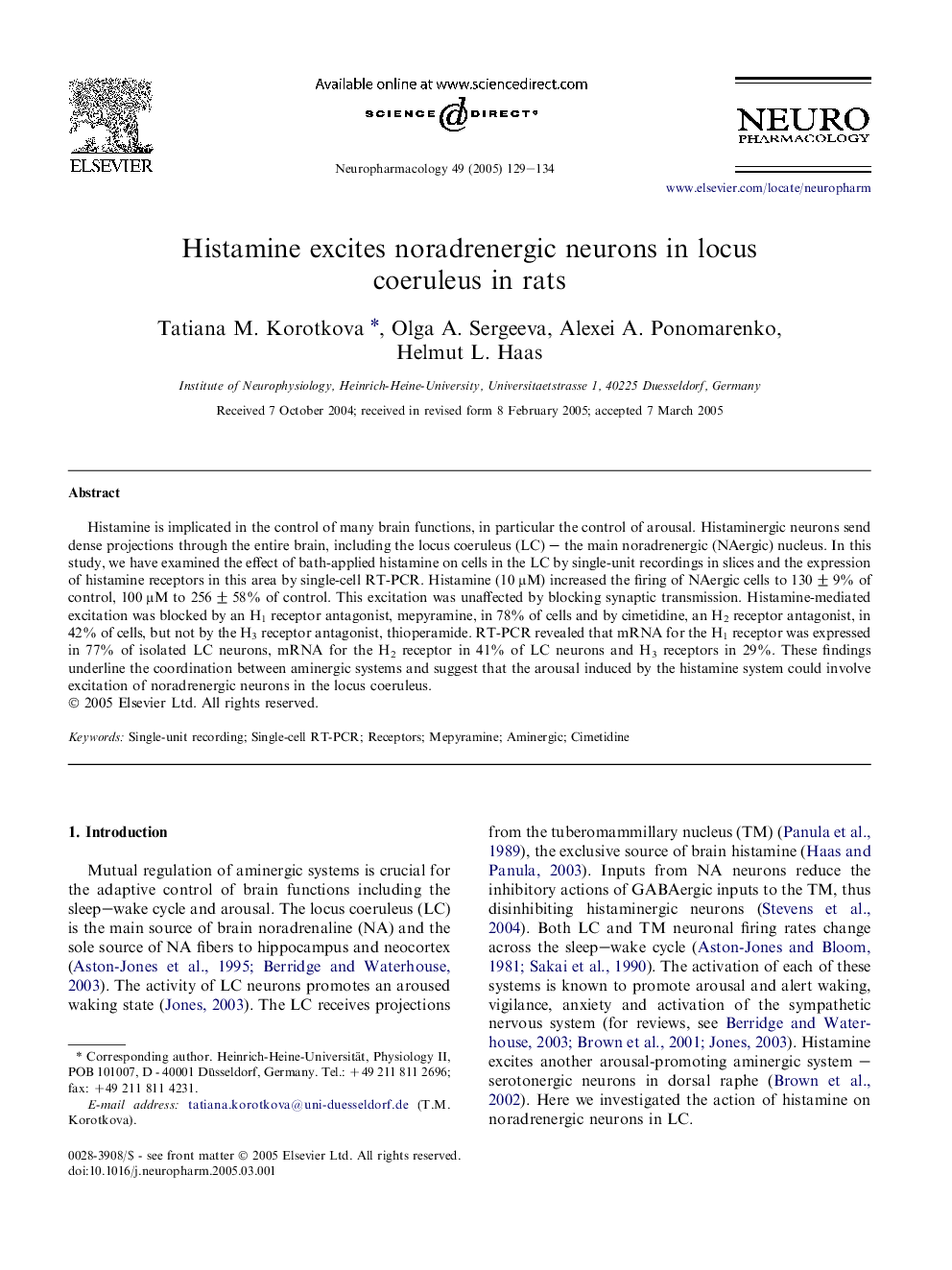| Article ID | Journal | Published Year | Pages | File Type |
|---|---|---|---|---|
| 8998224 | Neuropharmacology | 2005 | 6 Pages |
Abstract
Histamine is implicated in the control of many brain functions, in particular the control of arousal. Histaminergic neurons send dense projections through the entire brain, including the locus coeruleus (LC) - the main noradrenergic (NAergic) nucleus. In this study, we have examined the effect of bath-applied histamine on cells in the LC by single-unit recordings in slices and the expression of histamine receptors in this area by single-cell RT-PCR. Histamine (10 μM) increased the firing of NAergic cells to 130 ± 9% of control, 100 μM to 256 ± 58% of control. This excitation was unaffected by blocking synaptic transmission. Histamine-mediated excitation was blocked by an H1 receptor antagonist, mepyramine, in 78% of cells and by cimetidine, an H2 receptor antagonist, in 42% of cells, but not by the H3 receptor antagonist, thioperamide. RT-PCR revealed that mRNA for the H1 receptor was expressed in 77% of isolated LC neurons, mRNA for the H2 receptor in 41% of LC neurons and H3 receptors in 29%. These findings underline the coordination between aminergic systems and suggest that the arousal induced by the histamine system could involve excitation of noradrenergic neurons in the locus coeruleus.
Related Topics
Life Sciences
Neuroscience
Behavioral Neuroscience
Authors
Tatiana M. Korotkova, Olga A. Sergeeva, Alexei A. Ponomarenko, Helmut L. Haas,
